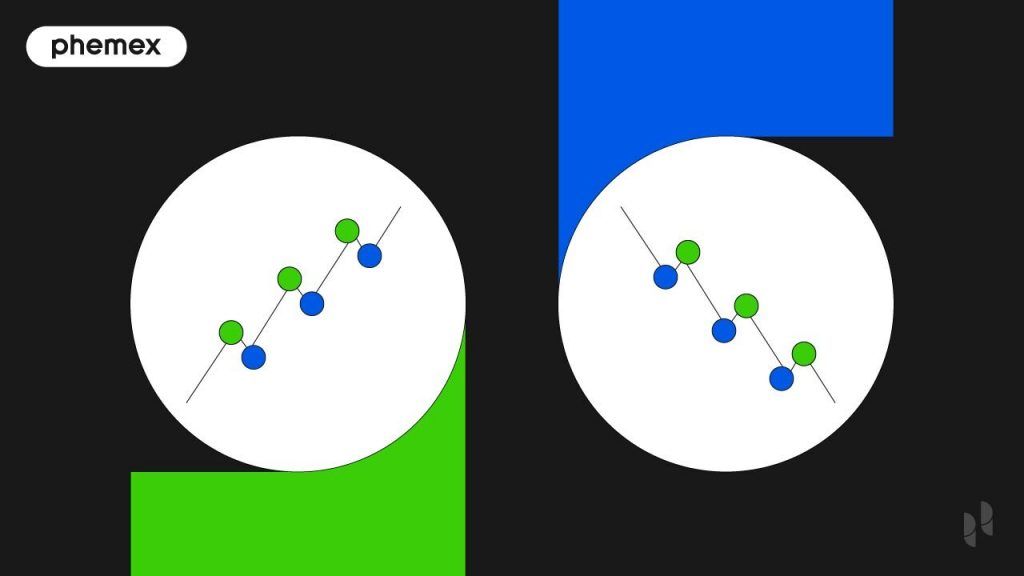
A Static Structural Stop
The most common type of stop traders use is often a static structural stop. A common example is if the price is making a series of higher lows, or price breaks through a level and is beginning to trend, traders will place their stop below the last structural low.

As you can imagine these types of locations are often clustered with liquidity and as a result are targets of stop hunts by larger players looking to either fill positions or even provoke cascade liquidations in the direction they wish the market to travel. This can make it very difficult to place an appropriate stop. This is also why the old saying goes “Place your entry where others would place their stops”.
But what is an appropriate stop then? A stop should be placed in an area where if the price passes through, your original trade thesis is likely invalidated. So going back to the image above.

A simple example in the context of a trending structure that has just broken the original high of its consolidation.
Keep in mind- There are few HARD RULES in trading. The perfect stop does not exist always.
If we are taking the breakout trade at ‘A’, then a stop back below the level that is broken makes sense. If the price falls back through the level, it’s possible that it isn’t exactly a breakout, and your thesis is incorrect.
A stop at location ‘B’ makes sense if you are trying to place a tight stop and maybe a larger position on the anticipation that the high breaks and results in continuation for the larger structure. You could say that the structure is forming a higher low and that it is a micro-trend within the larger consolidation. This stop might allow for a bit of back and forth, i.e. struggling at the high that often occurs in the first moments after pressing upward as shorts load on.
A stop placed at location ‘C’ is more liberal and one that allows for the most price fluctuation. It is likely a stop placed on the belief that the only thing that matters is the larger trend remaining intact, and therefore the most important area to maintain is the first significant low.
All of these imply their own level of invalidation, but the reality is that ‘C’ allows for more adverse movement, and gives price the most breathing room.
The problem is that rarely do things ever occur this cleanly when trading, and one price point in time is maybe not necessarily enough to use to say a trade is no longer valid. It also might not be necessary that you wait for a structural low to be violated to ascertain whether or not a trade is invalidated. Certainly, for breakout trades, it makes sense to place a tight stop if you are within close proximity to the breakpoint and having just entered. What about in messy trends? or messy consolidations?
Certainly, there are other ways we can define the behavior of a structure and how it is invalidated. Specifically, what are the average defining features of price movement within this structure, that go beyond just structure?
Apply The ATR (Average True Range)
One of the best things we can incorporate into our stops is what the norms are for price behavior, i.e. VOLATILITY. We can apply some form of ATR (average true range) into our stop placement. This way we have an idea of whether or not a move was significant, compared to what current levels of volatility have allowed for.
As for the ATR, it shows how much an asset moves, on average, during a given time frame. The standard setting is typically the average range of movement of 14 candle periods.

So, if we have a strong trending structure, where do we put our stop once we have moved well beyond a previous low or structural stop we had anchored to originally? We obviously want to employ a stop that is not too loose that we give up our gains, but not too tight that we are taken out of the trade for what is normal back and forth behavior.
In this case, one of the best things to do is use a trailing stop that is a multiple of what the normal daily expected volatility is, or ATR. If normal daily price movement is 500, we certainly don’t want to be stopped out for a red day that drops 250, but we might want to take seriously a day that drops 1k. In this case, setting a stop at any multiple from 1.5 and above seems reasonable. As in, if the current daily ATR is 500, a stop of 1.5 ATR would be 750.
(Also as a side note, in the example above; if our daily ATR is 500 on average, and we have just covered that distance in a 5-minute candle, it might be worth paying attention)
As for trading within a range or consolidation, we can also use ATR when placing stops below lows to avoid what might be a typical stop hunt. In the case of a long, if we are trading on the 30-minute chart, placing a 30-minute period ATR stop distance from our wick low can give us that breathing room from any return wicks into the area. This can also be invaluable if you are playing a swing failure and catching a wick below a previous low. If you are unsure of where your stop should be, place your stop at a multiple of the ATR of the time period you are trading on, below your entry.
Contrary to your long, if you were looking for a short, a breakout downward would be validated by an increase in volatility. Therefore the multiple of ATR could be something to substantiate a short thesis, hence invalidating your swing failure long thesis.
Hopefully, with just this short introduction to using ATR as a stopping tool, you can begin to incorporate some new methods into crypto trading that will improve your bottom line.
By Ryan Scott (@CanteringClark)
Read More
- Effective Exit Trading Strategies: How to Exit Trades in Profit
- Avoiding Common Trading Mistakes
- Understanding Position Sizing in Crypto Trading
- What Is Stop-Loss Hunting (Stop Run) in Crypto?
- What is Chande Kroll Stop: Stop-Loss and Take-Profit Strategy
- What are Market, Limit and Stop Orders: Basic Order Types Explained
- Crypto Price Action Trading Strategy
- What Are Continuation Patterns: Geometric Shapes to Trading Success








